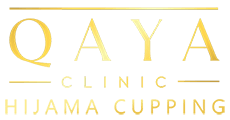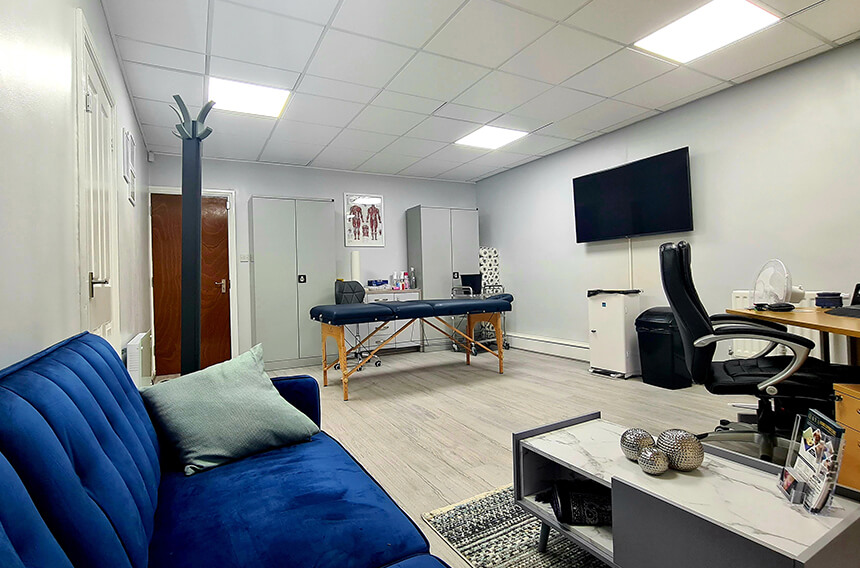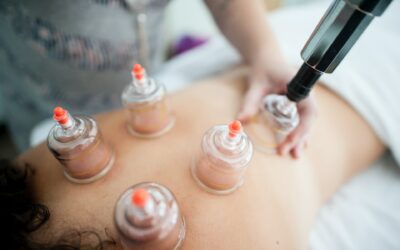Overview
Eight out of 10 people will suffer from back or neck pain at some point in their life. Acute pain is abrupt, intense pain that subsides after a period of days or weeks. However, some people continue to suffer from pain that continues despite nonsurgical or surgical treatment methods. This long-term pain is called chronic pain.
The following advice will benefit a majority of people with acute back or neck pain. If any of the following guidelines causes an increase of neck or back pain, spreading of pain to the arms or legs, or increase in weakness in the arms or legs, do not continue the activity and seek the advice of a doctor or physical therapist. For additional advice about chronic pain, see Pain Management.
What can I do about acute back or neck pain?
The key to recovering from acute back or neck pain is restricting your activity and taking over the counter medications, because most back pain is related to muscle strain. In most cases, acute back pain will go away on its own over a period of days. Here are some tips that will help you recover:
1. Take it easy
If you think you’ve hurt your back, ease up on the pressure you’re putting on your back. Many people actually have little choice in the matter—their back pain will force them to drop to their knees or “freeze” in a bent-over position. Others will be able to function somewhat normally, but with uncomfortable pain. Contrary to popular belief, studies on acute back pain actually show that a few days of restricting your activity, and taking the appropriate over-the-counter medication, is all that many people really need to allow the strained muscles to relax and unbind. However, it is important to talk with your health care provider before taking any medication, especially if you are taking other medications or have a chronic medical condition.
2. Ice, then heat
Remember this rule: “Ice first for 48 hours, then heat.” Ice and heat can alleviate local pain that comes from muscle and ligament strain. Ice slows swelling and inflammation and acts as a local anesthetic, but after 48 hours, it loses its effect. Using heat afterwards increases blood flow to the deep tissues and relaxes muscle spasms.
3. Over-the-counter medications
Inflammation is the body’s protective response to irritation or injury and is characterized by redness, warmth, swelling and pain. To aid in healing and relieve pain, use of over-the-counter medications such as ibuprofen, naproxen sodium, aspirin or ketoprofen are often recommended. These medications are called non-steroidal anti-inflammatory drugs (NSAIDs), and they can effectively reduce inflammation and relieve pain. Prolonged use of NSAIDs can lead to gastrointestinal problems, so it is wise to check with your health care provider before using NSAIDs or any medication. Over-the-counter NSAIDs are intended for short-term use, so never use one for more than a week unless it is recommended by your health care professional.
In some cases, acetaminophen may be recommended. While not an anti-inflammatory drug, acetaminophen can be effective in relieving pain without the risk of gastrointestinal problems that have been associated with prolonged use of NSAIDs. However, acetaminophen can also cause side effects, so it is best to follow these basic rules before taking any medication: always read the directions on the label; watch for the side effects listed; and consult your health care provider before your begin self-treatment.
4. Massage
If you have a willing companion, gentle massage may provide some relief by stretching tight muscles and ligaments.
5. Don’t stop moving
Studies maintain that limited movement of muscles and joints is more effective for treating simple back pain than passive methods such as rest and drugs. Restricting your activity is important, but as the pain eases, you should move your muscles and joints past the point of the initial restriction. Simple exercises can help this process, but it is important to consult your health care provider or a back specialist for the exercise program that is right for you.
6. Adjust your daily routine
When you are in pain, you need to make adjustments to the way you approach daily activities. The key to recovering from acute back and neck pain is maintaining the normal curvature of the spine. Supporting the hollow of your back and practicing good posture will help decrease your recovery time.
Standing
 Figure 1. The proper way to stand with your head up, shoulders straight, chest forward, hips tucked in, and your weight balanced evenly on both feet.
Figure 1. The proper way to stand with your head up, shoulders straight, chest forward, hips tucked in, and your weight balanced evenly on both feet.
- Avoid standing in the same position for a long time.
- If possible, adjust the height of the work table to a comfortable level.
- When standing, try to elevate one foot by resting it on a stool or box. After several minutes, switch your foot position.
- While working in the kitchen, open the cabinet under the sink and rest one foot on the inside of the cabinet. Change feet every 5 to 15 minutes.
Sitting
 Figure 2. The proper way to sit with your hips and knees at a right angle (use a foot rest or stool if necessary). Your legs should not be crossed and your feet should be flat on the floor.
Figure 2. The proper way to sit with your hips and knees at a right angle (use a foot rest or stool if necessary). Your legs should not be crossed and your feet should be flat on the floor.
- Sit as little as possible, and only for short periods of time (10 to 15 minutes).
- Sit with a back support (such as a rolled-up towel) at the curve of your back. When you are not using a back support or lumbar roll, follow these tips to find a good sitting position:
- Sit at the end of your chair and slouch completely.
- Draw yourself up and accentuate the curve of your back as far as possible. Hold for a few seconds.
- Release the position slightly (about 10 degrees). This is a good sitting posture.
- Sit in a high-back, firm chair with arm rests. Sitting in a soft couch or chair will tend to make you round your back and won’t support the curve of your back. At work, adjust your chair height and workstation so you can sit up close to your work and tilt it up at you. Don’t hunch or lean over your work. Rest your elbows and arms on your chair or desk, keeping your shoulders relaxed.
- When standing up from the sitting position, move to the front of the seat of your chair. Stand up by straightening your legs. Avoid bending forward at your waist. Immediately stretch your back by doing 10 standing backbends.
Driving
- Use a back support (lumbar roll) at the curve of your back. Your knees should be at the same level or higher than your hips.
- Move the seat close to the steering wheel to support the curve of your back. The seat should be close enough to allow your knees to bend and your feet to reach the pedals
Stooping, squatting & kneeling
Decide which position to use. Kneel when you have to go down as far as a squat but need to stay that way for a while. For each of these positions, face the object, keep your feet apart, tighten your stomach muscles and lower yourself using your legs.
Lifting objects
 Figure 3. The proper way to lift a heavy object. Keep your back straight and bend at the knees rather than at the waist.
Figure 3. The proper way to lift a heavy object. Keep your back straight and bend at the knees rather than at the waist.
- Try to avoid lifting objects if at all possible.
- If you must lift objects, do not try to lift objects that are awkward or are heavier than 30 pounds.
- Before you lift a heavy object, make sure you have firm footing.
- To pick up an object that is lower than the level of your waist, keep your back straight and bend at your knees and hips. Do not bend forward at the waist with your knees straight.
- Stand with a wide stance close to the object you are trying to pick up, and keep your feet firm on the ground. Tighten your stomach muscles and lift the object using your leg muscles. Straighten your knees in a steady motion. Don’t jerk the object up to your body.
- Stand completely upright without twisting. Always move your feet forward when lifting an object.
- If you are lifting an object from a table, slide it to the edge to the table so that you can hold it close to your body. Bend your knees so that you are close to the object. Use your legs to lift the object and come to a standing position.
- Avoid lifting heavy objects above waist level.
- Hold packages close to your body with your arms bent. Keep your stomach muscles tight. Take small steps and go slowly. To lower the object, place your feet as you did to lift, tighten stomach muscles and bend your hips and knees.
Reaching overhead
- Use a footstool or chair to bring yourself up to the level of what you are reaching.
- Get your body as close as possible to the object you need.
- Make sure you have a good idea of how heavy the object is you are going to lift.
- Use two hands to lift.
Sleeping and lying down
- Select a firm mattress and box spring set that does not sag. If necessary, place a board under your mattress. You can also place the mattress on the floor temporarily if necessary.
- If you’ve always slept on a soft surface, it may be more painful to change to a hard surface. Try to do what is most comfortable for you.
- Use a back support (lumbar support) at night to make you more comfortable. A rolled sheet or towel tied around your waist may be helpful.
- Use a firm pillow that supports the curve of your neck.
- Do not sleep on your side with your knees drawn up to your chest.
- When standing up from the lying position, turn on your side, draw up both knees and swing your legs on the side of the bed. Sit up by pushing yourself up with your hands. Avoid bending forward at your waist.
Sex
If you have ongoing back or neck pain, you may think that sex is difficult or impossible. But pain doesn’t have to put an end to your sex life. It is important that you maintain open communication with your partner so that you both avoid frustration, depression, or emotional withdrawal. A good attitude and a willingness to experiment can help you overcome the fear of pain and restore intimacy between you and your partner.
- Work with your physical therapist to find the position where your back and neck feel the most comfortable.
- Keep your back supported as much as you can.
- Be willing to try new positions.
- Use a bed with a firm mattress and try to avoid soft surfaces that strain the back.
- Look for resources (books & videos) made for people especially with back pain.
Other helpful tips
Avoid activities that require bending forward at the waist or stooping. When coughing or sneezing, try to stand up, bend slightly backwards to increase the curve in your spine.
Preventing pain and injury
Posture. Using correct posture and keeping your spine in alignment are the most important things you can do for your neck and back (see Posture & Body Mechanics). The lower back (lumbar curve) bears most of your weight, so proper alignment of this section can prevent injury to your vertebrae, discs, and other portions of the spine. If you have back or neck pain, you may need to make adjustments to your daily standing, sitting, and sleeping habits and learn proper ways to lift and bend. Your workspace may need to be rearranged to keep your spine from slouching. Because extra pounds can make back pain worse, you should maintain a weight that is appropriate for your height and body frame.
Exercise. Regular exercise is important to prevent back pain and injury. A program of strengthening, stretching and aerobic exercises will improve your overall fitness level. Research has shown that people who are physically fit are more resistant to back injuries and pain, and recover quicker when they do have injuries, than those who are less physically fit (see Exercises: Back Stretches & Strengthening).
When to see a doctor
Most simple back pain will start to improve within a day or two of restricted activity and over-the-counter medication. If you find yourself taking more and more pills to relieve back pain, or if the pain is getting worse, you’ll want to contact a back specialist. After a thorough medical history, physical examination, and diagnostic tests a doctor may be able to determine if there is a specific cause of your pain and will recommend appropriate treatments.
Not all chronic pain is treatable. Pain management is an integrated approach to making pain tolerable by learning physical, emotional, intellectual and social skills. This may include exercise, physical therapy, medication, relaxation, acupuncture, behavior changes, biofeedback, hypnosis, and counseling. When you use pain management techniques, you stay in control of your own health. These techniques also help the brain produce it’s own pain medications called endorphins, which literally means “morphine within” (see Pain Management).
Sources & Links
Glossary
acute: a condition of quick onset lasting a short time, opposite of chronic.
chronic: a condition of slow progression and continuing over a long period of time, opposite of acute.
disc (intervertebral disc): a fibrocartilagenous cushion that separate spinal vertebrae. Has two parts, a soft gel-like center called the nucleus and a tough fibrous outer wall called the annulus.
lordosis: abnormal forward curve of the lumbar spine, also called sway back.
kyphosis: abnormal curve of the thoracic spine, also called hunchback.
vertebra: (plural vertebrae): one of 33 bones that form the spinal column, they are divided into 7 cervical, 12 thoracic, 5 lumbar, 5 sacral, and 4 coccygeal. Only the top 24 bones are moveable.
OVER 10K HAPPY CLIENTS ACROSS THE UK INCLUDING BIRMINGHAM, WALSALL, DUDLEY, STOURBRIDGE, OLDBURY, WOLVERHAMPTON, COVENTRY, LEAMINGTON SPA, NOTTINGHAM, SOLIHULL, TELFORD, GLOUCESTER, WORCESTER, DERBY, BRISTOL, STOKE AND SUTTON COLDFIELD INCLUDING THE FOLLOWING AREAS:
Acocks Green, Alum Rock, Aston, Balsall Heath, Birmingham City Centre, Bordesley Green, Bromford, Castle Vale, Digbeth, Edgbaston, Erdington, Garretts Green, Great Barr, Hall Green, Handsworth, Harborne, Hay Mills, Highgate, Hockley, Hodge Hill, Jewellery Quarter, King's Heath, Kings Norton, Kingstanding, Kitts Green, Ladywood, Lozells, Moseley, Nechells, Newtown, Northfield, Nuneaton, Pelham, Perry Barr, Quinton, Saltley, Selly Oak, Selly Park, Shard End, Sheldon, Small Heath, Smethwick, South Yardley, Sparkbrook, Sparkhill, Stechford, Tipton, Tyseley, Ward End, Washwood Heath, Wednesbury, West Bromwich, Winson Green, Witton, Yardley, Yardley Wood
Our therapists are fully insured for all services we provide. Qaya Clinic is based in Edgbaston Medical Village, Birmingham City Centre. WE ARE OUTSIDE THE CLEAN AIR ZONE with free nearby parking.






